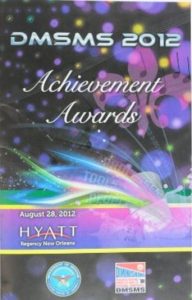Arrow ACT Masters: An Environment of Innovation
GDCA enjoyed the privilege of being a part of this year’s Arrow Electronics ACT Masters 2013 in Denver CO. Arrow’s technical sales force was trained in a centralized fashion while […]
GDCA enjoyed the privilege of being a part of this year’s Arrow Electronics ACT Masters 2013 in Denver CO. Arrow’s technical sales force was trained in a centralized fashion while […]
 After our evacuation from New Orleans, we wrote about the part that collaboration played in our experiences. While we focused on how the collaboration mostly focused on safely addressing an incoming hurricane; generally when we talk about collaboration here at GDCA, we’re talking about collaboration in the sense of an integrated supply chain poised to protect the embedded industry from unplanned obsolescence.
After our evacuation from New Orleans, we wrote about the part that collaboration played in our experiences. While we focused on how the collaboration mostly focused on safely addressing an incoming hurricane; generally when we talk about collaboration here at GDCA, we’re talking about collaboration in the sense of an integrated supply chain poised to protect the embedded industry from unplanned obsolescence.
That is why we’re taking a moment to celebrate and announce that DMSMS 2012 is back in the saddle for November 26-29, 2012 in Orlando, Florida.
We know that in the face of obsolescence no one can afford to be isolated in the supply chain. That is why we are pleased to announce that in partnership with Curtiss-Write, IHS, and Rochester Electronics we will be presenting on the realities of cross-industry sustainment: Building an Integrated Supply Chain to Support Warfighter Systems.
They both get harder to maintain as they get older, and if you don’t plan for obsolescence, they can both fail.
It’s common sense. As things get older, they become more expensive to maintain. For example, an antique car was state-of-the art when it first came out. It performed beautifully, and the parts were easy to find. If it had any real problems, it could be taken into the dealer for repairs. However, now that the car is a classic, it requires a lot more upkeep. In the past, it only needed to be taken in for oil changes and tune ups. Now it needs a new transmission, replacement brakes, a new timing belt and a new radiator… and as time passes, the mechanic can’t even get the parts he needs to fix it.
As the components become harder to find, the odds that your car can even feasibly be repaired get more remote. At first, you might scour junkyards and advertise online, looking for those crucial pieces of equipment, but eventually you will probably end up having to find someone who can reverse engineer or custom build the needed parts for you. And now a part that may have been $300 new is going to cost you hundreds more — if not thousands.
With each transaction, that car gets more and more expensive to fix and maintain, but some cars just can’t be replaced.
When people think of “legacy”, they often think of what is being passed along or left to the future. We believe a business’ legacy is the lasting mark they make […]
When I first began my work with GDCA one of the questions I had was “Why is dealing with obsolete components not just about making more parts?”
As I have come to learn, unfortunately, obsolescence management is not just as simple as “making more parts.”
Imagine you manufacture various components. In the 1960s, the computers you were making parts for were relatively simple, without many customers who could even afford computers; quantities were low, the manufacturing was relatively easy, and products generally lasted longer.
Let’s jump forward to today. Over time, and as technology has evolved (Moore’s Law), your fabrication company’s production has also evolved. Now with each product line, you are cranking out hundreds of thousands of parts each day. Customers who need 50 parts are not happy to hear of a 5000 part minimum order quantity (MOQ). And besides, to some the manufacturers even a 5000 MOQ on an older part can be a distraction.
Is there a downside to new technology innovation? We all love and encourage innovation, but what is the hidden cost?
Critical embedded applications in the Defense and Medical industry are a great example of where this question comes into play. Both these applications have people’s lives relying on them, and both require extended life cycles due to critical verification and certification requirements.
If an OEM experiences sharp drop in demand for a particular embedded board, it doesn’t make any business sense to continue building more, and the board will likely become obsolete. Everyone understands that an OEM can’t remain competitive if they have to support every product they’ve ever developed… forever. But if that board is still being used in the defense or medical industry, suddenly the systems engineer is faced with diminishing manufacturing sources and material shortages (DMSMS) and higher risk of exposure to counterfeits if obsolete components must now be sourced.
 You may not know about Brooks Stevens, and today is his birthday.
You may not know about Brooks Stevens, and today is his birthday.
Clifford Brooks Stevens, born June 7, 1911, was an American industrial designer of home furnishings, appliances, automobiles and motorcycles— as well as a graphic designer and stylist. At the time of his death, he was considered “a major force in industrial design.”
If Google was to do a custom sketch for his birthday, it would probably be the widely recognized Oscar Mayer “Wienermobile” or the Harley-Davidson motorcycles body he designed in the 60s (production of new bikes are still based on Stevens’ body designs).
But how many will reference a topic sure to light a fuse in any frugal consumer? Planned Obsolescence.
Sometimes we can get a little carried away with our work here at GDCA. From embedded boards to trains, we love talking about all things legacy and EOL; and we […]
1987 takes us back: a dozen eggs were 65 cents, a gallon of gas was 89 cents, you and the family may have tuned-in to watch the premiere of a […]
Like the image to the side, modern combat vehicle electronics can resemble a bowl of hardware spaghetti. Different “bolt-on” devices and adaptors are stitched together by multiple suppliers who may […]
Notifications